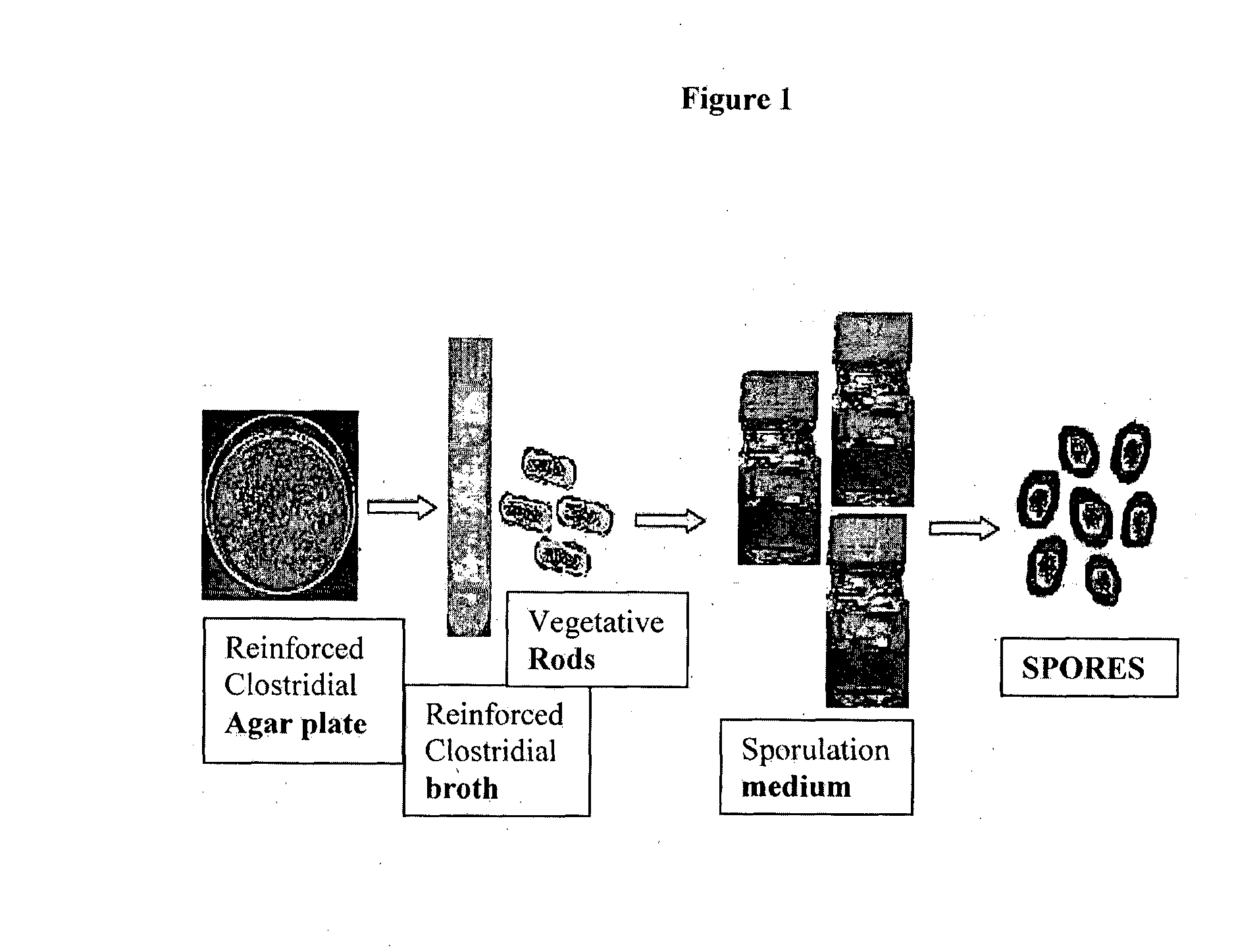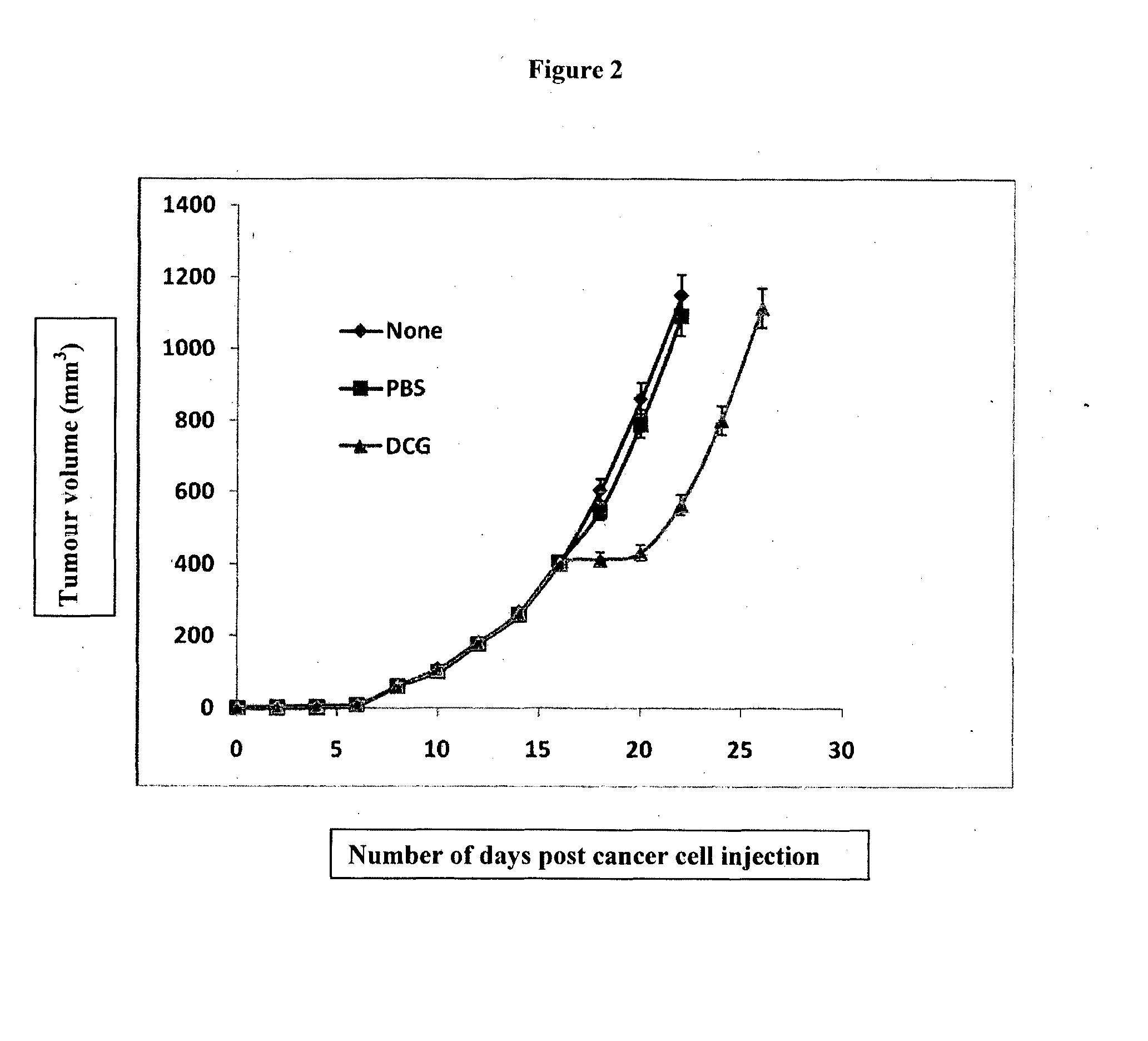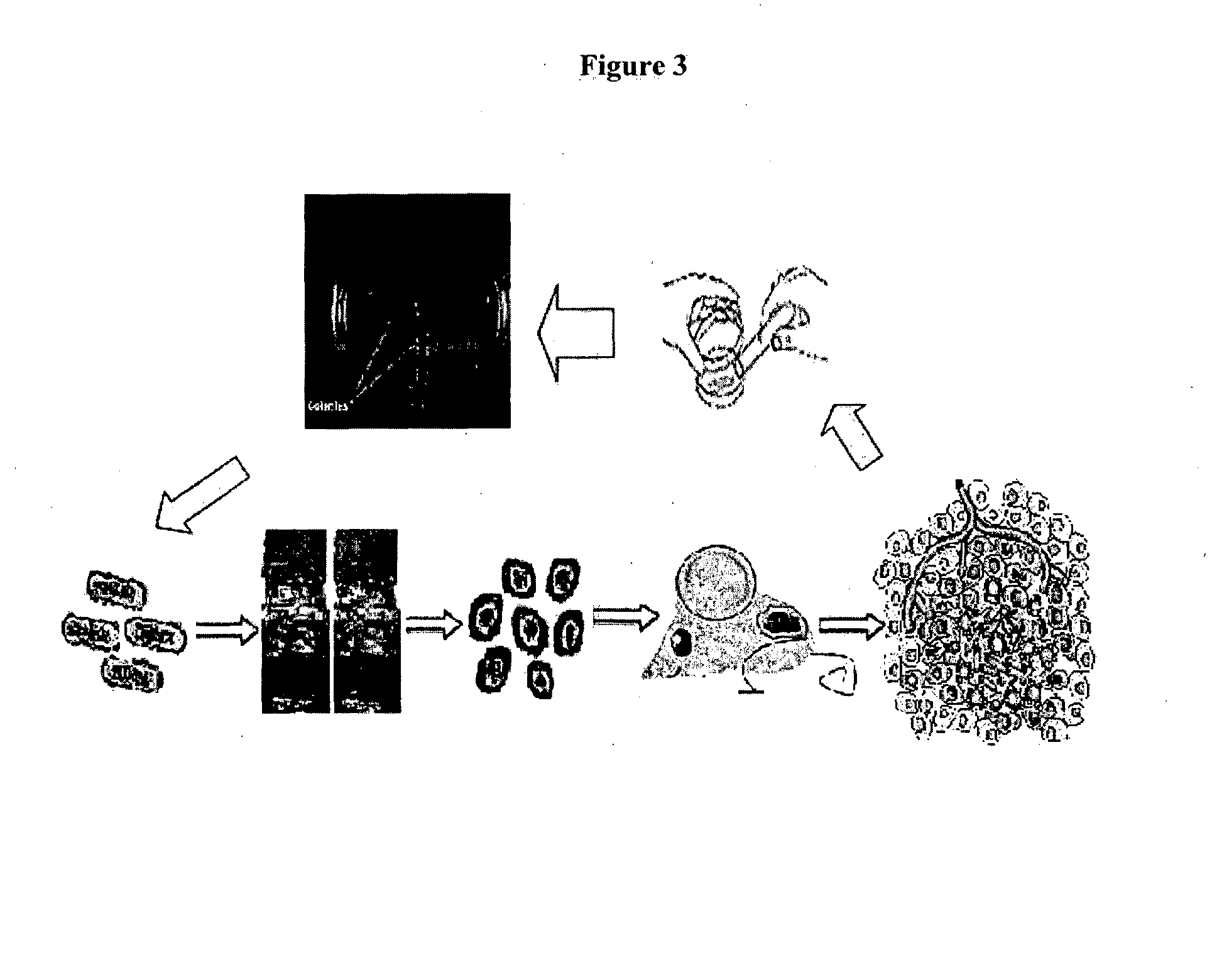Compositions and methods of use
- Summary
- Abstract
- Description
- Claims
- Application Information
AI Technical Summary
Benefits of technology
Problems solved by technology
Method used
Image
Examples
example 1
Identification, Isolation and Colonisation of the New Derived Clostridial Strains
[0160]The inventors examined C. novyi-NT and C. sordellii as well as two saccharolytic species C. acetobutylicum and C. beijerinckii and compared them with additional proteolytic Clostridium spp available (six clinical variants of C. sodellii, two C. bifermentas, and ATCC No. 25757 (i.e. an avirulent, proteolytic strain of C. ghonii which has not been previously reported has an effective anti-cancer agent for solid tumours) in advanced melanoma, colon and lung cancer (0.45 cm3) models, such as xenograft and syngeneic mouse models of advanced non-small cell lung carcinoma (NSCLC).
[0161]Firstly, the inventors prepared injectable clostridial spores to administer to the models (see FIG. 1—Schematic representation of spore production). The method of effective culturing and harvesting of clostridial spores was discovered by the inventors and comprise the following steps:[0162]Use of a modified sporulation med...
example 2
Adaptation to Achieve New Derived Clostridial Strains
[0179]The avirulent C. ghonii strain was repeatedly adapted in three tumour models: (1) an advanced NSCLC (A549) (2) Colon cancer model (HCT116) and (3) Head and neck (HN5) cancer. Tumours used for adaptation in each group (n=6) completed oncolysis. Clostridial rods were collected from within the tumour inoculated by spores of the avirulent C. ghonii strain, ATCC No. 25757, by harvesting the solid tumour and then homogenising the tumour tissues, which were then streaked out on a Reinforced Clostridial Medium / agar plate. Three single colonies from the plates were then pooled in a 40 ml of Reinforced Clostridial Medium broth culture and incubated under anaerobic condition at 37° C. overnight. For sporulation, the 40 ml bacterial culture was added to 1 Litre of sporulation medium (0.5% Na2HPO4, 3% thiotone E peptone, 0.05% L cysteine, 1% maltose, 5% dried cooked meat particle, pH 7.4) and incubated under anaerobic condition at 37° C....
example 3
[0193]The inventors tested the addition of Cetuximab with administration of one of the new derived clostridial strains into xenograft mouse models.
[0194]Cetuximab is a chimeric (mouse / human) monoclonal antibody (anti-EGFR mAbs) that inhibits epidermal growth factor receptors (EGFR). Cetuximab is routinely administered to a patient by intravenous infusion for treatment of metastatic colorectal cancer and head and neck cancer.
[0195]MW-DCG_HNCv18 was administered with anti-EGFR mAbs (Cetuximab-3×i.p) to a xenograft mouse model of advanced solid head and neck cancer. As per FIG. 7, this new derived clostridial strain penetrated advanced solid head and neck cancer models. These spores germinated and localised to hypoxic / necrotic regions where they replicated to high numbers, resulting in a two-step sorts of oncolysis in all solid tumours. The first step was a whole tumour growth stop immediately following spore injection and colonisation; Then a slow, but assured oncol...
PUM
| Property | Measurement | Unit |
|---|---|---|
| Fraction | aaaaa | aaaaa |
| Fraction | aaaaa | aaaaa |
| Fraction | aaaaa | aaaaa |
Abstract
Description
Claims
Application Information
 Login to View More
Login to View More - R&D
- Intellectual Property
- Life Sciences
- Materials
- Tech Scout
- Unparalleled Data Quality
- Higher Quality Content
- 60% Fewer Hallucinations
Browse by: Latest US Patents, China's latest patents, Technical Efficacy Thesaurus, Application Domain, Technology Topic, Popular Technical Reports.
© 2025 PatSnap. All rights reserved.Legal|Privacy policy|Modern Slavery Act Transparency Statement|Sitemap|About US| Contact US: help@patsnap.com



